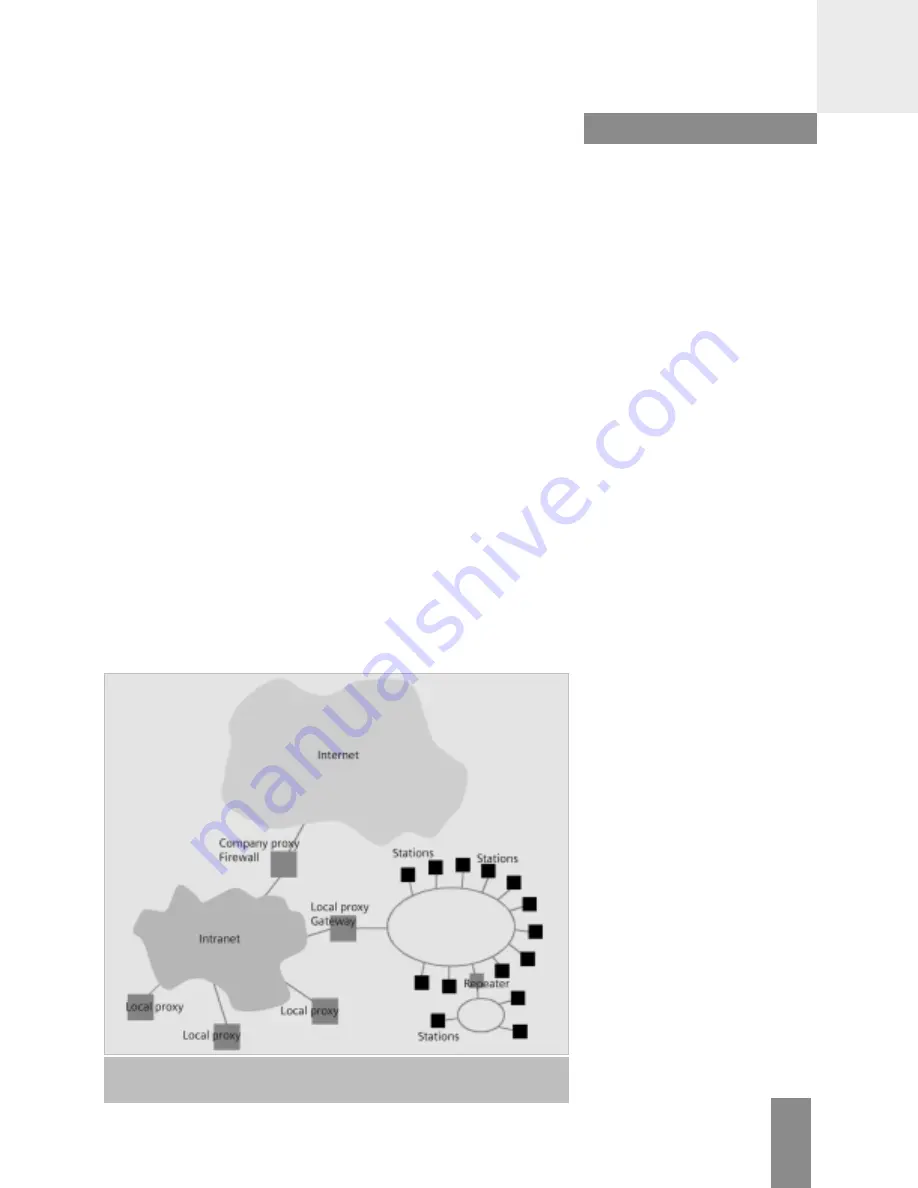
4/22
Connection to the BDA Plus via the Ethernet Interface
In addition to communication
via the serial RS232 channel, the
BDA Plus features an Ethernet
interface. If the BDA Plus is to be
addressed via this interface, it
must be integrated in the local
Ethernet (LAN). This chapter
explains a number of key terms
and settings.
Ethernet
Unlike the PROFIBUS-DP, Ethernet
does not function according to a
master-slave principle. All the
stations have equal priority on the
bus, which means that any station
can be the sender and/or receiver.
A sender can only send on the bus
if no other station is sending at that
point. This is due to the fact that
the stations are always “listening in”
to find out whether any messages
are being sent to them or any
senders are currently active.
If a sender has started sending,
it checks that the message it has
sent is not corrupt. If the message
is not corrupt, the send operation
continues. If the sender detects
that its data is corrupt, it must
abort the send operation because
a different sender has already
started sending data.
After a random time has elapsed, the
sender restarts the send operation.
This is known as CSMA/CD and,
because it is a “random” access
procedure, does not guarantee a
response within a certain time
frame. This largely depends on the
bus load, which means that real-
time applications cannot yet be
implemented with Ethernet.
Definition of Key Terms
An Intranet system is comprised
of several Ethernet lines connected
to each other via gateways within
a company. The structure of an
Intranet system can be just as
diverse as that of the Internet:
it can be restricted to one location
or distributed worldwide.
Ethernet/Intranet lines are
connected to each other using
repeaters, bridges/switches, routers
and gateways. These modules work
at different levels in the ISO/OSI
7-layer model.
The repeater (or star coupler) only
regenerates and strengthens the
electrical signal; it does not
interpret bits. The bridge (or
switch) physically separates the
networks and performs fault and
load disconnection. Filtering and
guidance mechanisms are usually
implemented. The router decouples
the networks at the logical level
(protocol level) by means of the
specified addresses. Using routing
tables, it knows which messages
are to be sent to which address.
It continues to work, however, on
a protocol-dependent basis. The
gateway also enables the router
to convert services.
This means that it can act as a
security mechanism, such as a
firewall, while functioning as a
proxy.
A proxy is a program in a gateway
that acts as both the server and
client. It processes requests,
translates them if necessary, and
forwards them to the addressees.
Proxies are also used to control
access (firewall) and forward
requests for protocols that are
not supported. Intranet users in
particular are familiar with the
Internet/Intranet page caching
function offered by proxies.
The Intranet is connected to the
Internet via a company proxy,
which can also act as a firewall.
If a PC (user) wants to access
an area of the Intranet from the
Internet, the firewall must be
informed of which addresses
can be accessed from outside.
Breaker Data Adapter (BDA)
WL Circuit Breaker
Graphic 4-5
This diagram illustrates the structure of an Ethernet, how an intranet is integrated,
and how this is connected to the Internet.
WL PROFIBUS Communication and Electronic Accessories • July 2004
































